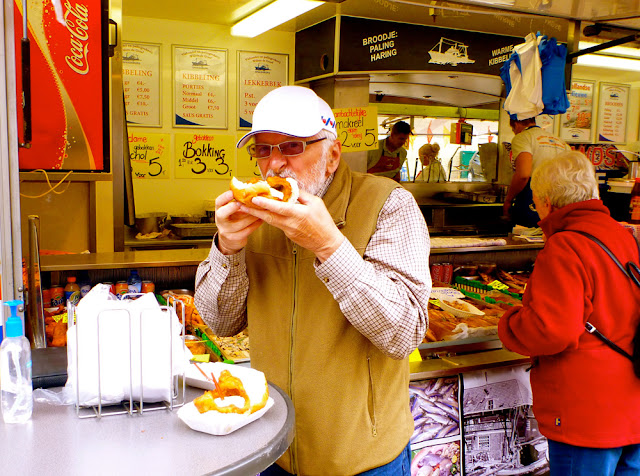In one of the old neighbourhoods of Harlingen, called de Lanen, the traditional game of Lanenkaatsen, Friesian handball is still played. It is believed to be one of the oldest ballgames and its scoring is similar to tennis. The first team scoring six games wins the match.
The Harlingen Historical Society is sponsoring the placement of old advertisements similar to those that were once painted on the walls of old business establishments. Most of the establishments are long gone, but the buildings and their facades remain. These wall paintings are located throughout the town, in alleys and in shopping streets. The building in this photo is in de Lanen and once housed a tobacconist and an apothecary. Those businesses are gone, but the two hundred year old building lives on. It has seen some changes, including the former storefront being incorporated into the living accommodations.
This old house is owned by Ferry van Bezooijen, the SRF ships carpenter who did Zonder Zorg's interior. He is in the midst of transforming the building into a Bed & Breakfast. This wall mural on the side of his house depicts Pirate cigarettes, once a popular brand name in the Netherlands. Embedded in the Dutch history are pirates and privateers and ships like the Flying Dutchman bringing home the loot. In these old advertisements, it was still acceptable to romanticize piracy as well as smoking.
The next time you are in Harlingen looking for a Bed & Breakfast, just keep your eyes open for a very large Pirate.




































